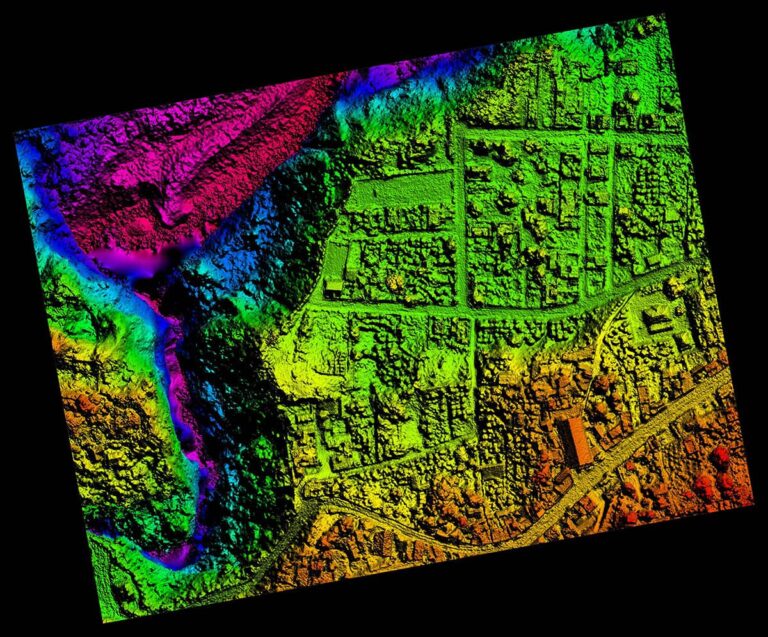Drones on Patrol, Portside – UAVs at Ports
Maritime shipping is the largest mover of products around the world. Some estimates project that by 2025, three-quarters of all goods will move via ship.
In 2019, 811 million Twenty-Foot Equivalent Units of containers moved through ports worldwide. In the UK, the maritime shipping industry is worth $57 billion. In the United States, a further $150 billion. Needless to say, it is big business.
While there are thousands of ports worldwide, 99 percent of the world’s goods pass through about 835 locations.
Each of these locations faces significant security challenges. Theft, smuggling, piracy, terrorism, fraud, and bribery are all potential risks.
Protecting these installations is a real challenge.
In recent years, many ports are benefiting from the addition of drones to help fight these genuine threats. Drones increase situational awareness, improve safety, and increase efficiencies.
Often this comes with a cost reduction bonus.
The Need for More
Port operations are dynamic and encompass many moving parts.
Ship to port interactions, the loading and unloading of cargo, inspections, refueling, and maintenance activities are daily events at seaports.
Logistics and security personnel are faced with the daunting task of keeping everything operational while mitigating security risks.
The sheer size of ports makes it near impossible for humans alone to monitor everything going on.
Cameras and other surveillance equipment help, but their static nature limits their effectiveness.
On the other hand, drones can quickly cover large areas and identify potential security breaches or other concerns.
Equipped with payloads that include cameras with powerful zoom capabilities and thermal imaging, UAVs can detect threats that might go otherwise unnoticed.
Having real-time situational awareness requires tools that can be deployed anytime and anywhere. Drones are one of the few resources that meet both of these criteria for ports.
Safer from Above
The complicated nature of seaport operations makes port facilities dangerous areas to work in.
The heavy equipment needed to load and unload shipping containers can put people at risk if they are not operated properly. Additionally, ports often store dangerous chemicals and flammable substances, which, when mishandled, can cause fires or explosions.
Drones can monitor the movements of equipment and dangerous substances to ensure safety measures are in place.
In the event of an accident, UAVs’ aerial perspective can direct emergency crews to where they are most needed. Drones with equipped with thermal cameras can even see through smoke or other visual obstructions to make sure first responder resources are utilized in the most efficient manner possible during a crisis.
See how drones are solving similar problems in other industries
Lowering Costs, Increasing Efficiency
Improved efficiencies are one of the strongest selling points for the adoption of drones into existing seaport systems. Port security typically requires an enormous investment in human resources.
Security personnel require expensive training and certifications. A certification such as the Transportation Worker Identification Credential card is needed at all ports in the United States. Such requirements and training make it more difficult and more expensive to add additional security force members.
Drones require none of these special certifications.
More recent drone solutions on the market can autonomously fly pre-programmed missions and connect with existing systems to provide real-time streaming of drone footage to multiple users.
These “drone-in-a-box” solutions require an initial investment but typically produce a sizeable return in a relatively short time. This is particularly true when the cost is compared to the entire expense of security personnel. The cost of workers comp, medical insurance, unemployment, vacation time, salary, and other benefits all add up quickly.
Savings in Action
As the world recovers from the COVID-19 pandemic, cost-saving measures will undoubtedly be a concern on every manager’s mind.
The Port of Antwerp presents one such example of cost savings.
Spanning almost 30,000 acres, the port complex recently started using autonomous drones provided by the Belgium company DroneMatrix. The drones can operate entirely independently or can fly on request.
Port authorities are already seeing the platform’s contribution to safety and in lowering costs. The vision for the program is to deploy an entire network of autonomous drones by 2022.
Ports around the world are vital to the global economy. Protecting them from piracy, terrorism, theft, and other security threats is a difficult task.
UAVs are proving themselves to be an effective and economical tool for port security professionals to use. The improvements to safety and efficiency, lower cost than other solutions, suggest drones have a bright future for this application.
About Consortiq ***
Are you looking to add drones to your organization? You’ll need training and consultation.
Are you looking to hire a company to produce the data for you? You’ll want an experienced remote pilot with a proven track record.
At Consortiq, we offer the full solution. We’ll help you build internal drone programs and train your pilots. Or, we’ll do the work for you, either independently or alongside your team.
With drones, there’s always a better way, and it’s our goal to help you find it! With hubs in North America and Europe, we’ll come to you, wherever you are in the world!
Schedule your risk-free consultation by completing the form below.

David Daly - Contributing Author
David Daly, is an award-winning photographer/writer and licensed (FAA) Commercial sUAS pilot. A graduate of the United States Naval Academy, David is a former Marine Corps officer with a BS in Oceanography and has earned his MBA from the University of Redlands. David has worked for Fortune 100 companies and has a background in aerospace, construction, military/defense, real estate, and technology.



